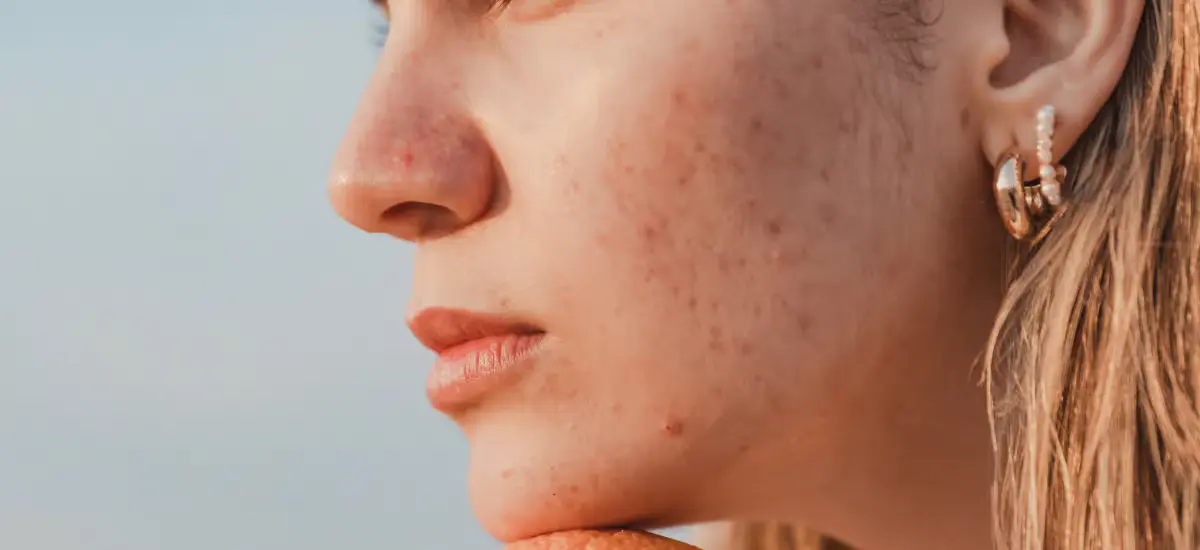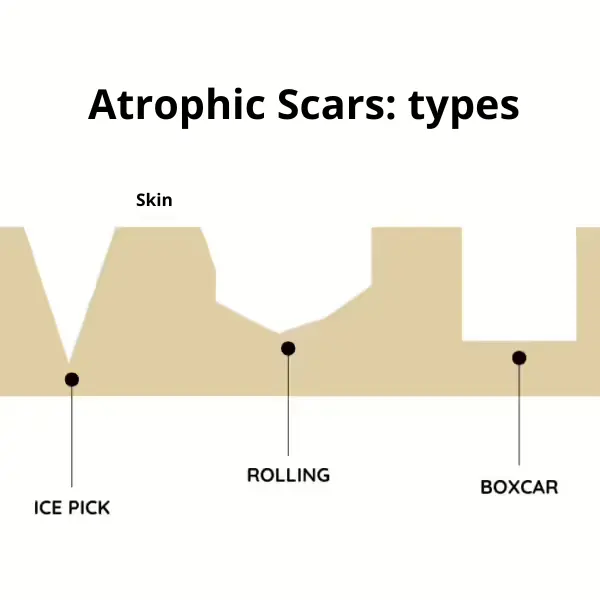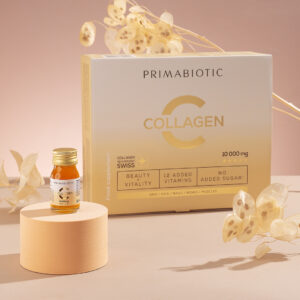
Collagen for Scars
Very often, once blemishes heal, scars and spots appear on the skin. Scars are most commonly caused by mechanical interference, but improper care of acne-prone skin can also play a significant role. Do you want to get rid of unsightly marks left by pimples and breakouts? Let us guide you on how to achieve it!
Acne Scars
Acne vulgaris is a chronic inflammatory skin condition affecting over 80% of the population in Western countries. Symptoms typically occur during adolescence, but the condition increasingly affects a larger percentage of young adults and adults over 30.
This dermatological condition is characterised by hyperactivity of sebaceous glands (seborrhoea) and the appearance of inflammatory lesions (papules, pustules, cysts) and non-inflammatory lesions (open and closed comedones). Scars affect up to 95% of those with acne.
Acne scars can be a source of significant emotional stress for many people. Due to their impact on self-esteem, social interactions, and even employability, early and effective treatment of these scars is crucial.
Acne Scars Types
Acne scars result from abnormalities in the skin’s healing process. During this process, deeper layers of the skin are damaged and replaced by fibrous connective tissue. These scars vary in shape, size, and depth, allowing us to categorise them as follows:
- Keloids – Scars that extend beyond the edges of the wound, most commonly appearing on the chest and back. They infiltrate healthy tissue surrounding the affected area and can enlarge over time.
- Hypertrophic Scars – Typically raised above the surface of the skin, pink or red in colour, but generally do not extend beyond the wound’s borders. Over time, they may flatten and shrink.
- Atrophic Scars – These are divided into three subtypes:
- Ice pick scars – Narrow and often deep, with sharp edges resembling a “V” shape.
- Rolling scars – Broad and shallow with sloping edges.
- Boxcar scars – Oval or round, with sharp edges and a “U”-shaped cross-section. These are often associated with chickenpox scars.

- PIE (Post-Inflammatory Erythema) – Fresh marks following the extraction of a pimple, red or pink in colour, without pigmentation, and vascular in nature.
- PIH (Post-Inflammatory Hyperpigmentation) – Persistent brown spots caused by acne or other skin injuries. Exposure to UV radiation can turn PIE into PIH.
Acne scars and discolouration may appear due to improper or untreated acne management. Another frequent cause is self-extraction of pimples, which is not only unhygienic but also spreads germs across the face.
Unfortunately, while discolouration can often be fully eliminated, scars cannot. They can, however, be significantly reduced, but complete removal is not possible. It’s important to avoid scratching or squeezing any skin lesions to prevent scar formation.
Burn Scars
Starting collagen supplementation early after a burn can significantly speed up healing and improve the appearance of scars. Collagen plays a crucial role in skin regeneration, helping to minimise the visibility of thickened or distorted burn scars.
Early supplementation supports skin elasticity and quality, which are critical for achieving better aesthetic outcomes. Always consult a doctor before beginning collagen supplementation to ensure safety and customise the treatment to individual needs.
Collagen for Surgical Scars
Collagen supplementation is increasingly being considered as a support in the process of healing post-surgical wounds. Collagen, being a key structural component of the skin, plays a crucial role in tissue repair. Its use in supplement form can contribute to faster skin regeneration, minimisation of scars, and improved elasticity and strength of the tissue.
The use of collagen supplements is particularly recommended during the recovery period after surgical procedures, as an adequate level of collagen in the body can significantly accelerate the healing process.
Effect of Collagen on Scars
Let’s take a closer look at the potential benefits of regular collagen supplementation for scarred skin:
- Improved Skin Elasticity – Helps enhance skin’s flexibility, aiding the healing process and reducing scar visibility.
- Support for Healing – Being a primary component of skin, collagen promotes more efficient wound healing, potentially resulting in less noticeable scars.
- Reduced Redness – May help alleviate redness around scars, particularly in new ones.
- Increased Hydration – Improves skin hydration, making scars less visible.
- Smoother Texture – Regular supplementation can help smooth the texture of scars, making them less noticeable to touch.
The reduction of scars with collagen is not a solution that guarantees their complete removal, but it can significantly improve their appearance. The degree of reduction depends on various factors, including the type of scar (e.g., keloid, atrophic, hypertrophic) and how long the scar has been present. Younger scars, which are still in the healing phase, are usually more responsive to treatment than older scars that have fully formed. The first effects of regular supplementation are typically visible after about 8-12 weeks.
Home Remedies for Acne Scars
Regular scar care can make them less visible. Coconut oil is often used for this purpose. It contains fatty acids and antioxidants, which help moisturise the skin and increase collagen production. It has a particularly good effect on fresh acne scars.
Home remedies for scars also include the use of apple cider vinegar or lemon juice. The acids in these ingredients remove dead skin cells and cleanse the skin. Leave the juice or vinegar on the skin for up to ten minutes, then rinse with water and moisturise with a nourishing facial cream or body lotion. A moisturising aloe vera gel can also help reduce scars and inflammation.
If you want to get rid of scars using home remedies, you can prepare masks made from natural ingredients, including:
- Honey mask
- Avocado and lime mask
- Jojoba oil and lime mask
- Olive oil mask
Homemade masks mainly have a brightening effect, which is especially helpful in the case of acne-related pigmentation. Additionally, they soothe the skin and stimulate its regeneration.
A holistic approach to skincare, based on lifestyle and both internal and external care, is key to success. Multi-faceted actions will make your skin beautiful and radiant.
Check out other articles:
